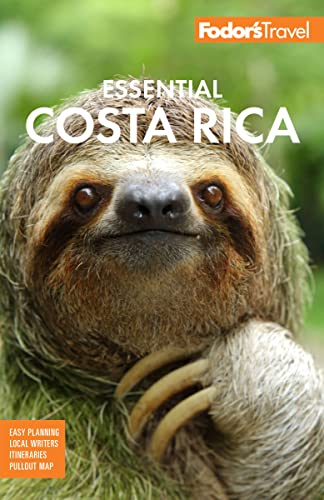Carara National Park
One of the last remnants of an ecological transition zone between Costa Rica's drier northwest and more humid southwest, Carara National Park holds a tremendous collection of plants and animals.
Squeezed into its 47 square km (18 square miles) is a mixed habitat of evergreen and deciduous forest, river, lagoon, and marshland. Much of the park's terrain is blanketed with dramatic primary forest, massive trees laden with vines and epiphytes. This is a birder's and plant lover's haven. The sparse undergrowth makes terrestrial wildlife and ground birds easier to see. The most famous denizens—aside from the crocodiles in the adjoining Río Tárcoles—are the park's colorful and noisy scarlet macaws, which always travel in pairs. An oxbow lake (a U-shaped body of water that was once part of a river) adds an extra wildlife dimension, attracting turtles and waterfowl—and the crocodiles that dine on them. Bring lots of drinking water; this park can get very hot and humid.
Best Time to Go
Dry season, January to April, is the best time to visit. The trails get muddy during the rainy season and usually close in the wettest months. This small park can feel crowded at the trailheads, so arrive early and walk far.
Fun Fact
The crowning glory of Carara is the successful conservation program that has doubled its scarlet macaw population. You can't miss these long-tailed, noisy parrots—look for streaks of blue and red in the sky.
Best Ways to Explore
Bird-Watching
With more than 400 species recorded here, Carara is on every bird-watcher's must-visit list. It's an especially good place to see elusive ground birds, such as antpittas (a small ground-dwelling bird that eats ants), early in the morning and late in the afternoon. Around the lake and in the marshy areas, you may also spot roseate spoonbills, northern jacanas, and stately boat-billed herons. The park's most famous fliers are the scarlet macaws. Once almost absent from the area, a decades-long conservation program has revitalized the local population.
Hiking
The best and really only way to explore this park is on foot. Trails are well marked and maintained but the ground is often muddy—this is rain forest, after all. The shortest—and most popular—loop trail can be done in only 15 minutes. But if you venture farther afield, you'll quickly be on your own. The longer trail that connects with the Quebrada Bonita loop takes about 90 minutes to hike. There is also a short wheelchair-accessible route that starts at the main entrance. It goes deep enough into the forest to give visitors a sense of its drama and diversity.
Wildlife-Watching
Carara is famous for an amazing variety of wildlife, given its relatively small area. Keep alert (and quiet) while walking and you'll have a good chance of spotting lizards, coatimundis (a member of the raccoon family), and sloths. You're almost guaranteed to see white-faced monkeys and, with luck, howler and spider monkeys, too. You may even see a nine-banded armadillo.
Top Reasons to Go
Birds
With a varied habitat that attracts both forest and water birds, Carara is a treasure trove for birders. Even if you're not a birder, you'll get a thrill hearing the raucous crowing of beautiful scarlet macaws as they soar over the forest canopy.
The Jungle
The forest here is simply magnificent. Even if you don't spot a single bird or animal, you will experience the true meaning of jungle. Carara has one of the most diverse collections of trees in the country. Breathe deeply, be alert to the symphony of forest sounds, and bask in a totally natural world.
Wildlife
For most visitors, wildlife is the park's main attraction. You can count on seeing monkeys and lots of lizards as you walk the trails. Although they are a little harder to spot, look for anteaters, sloths, and armadillos.




